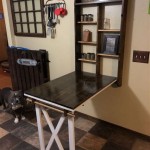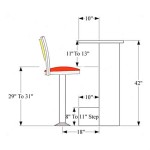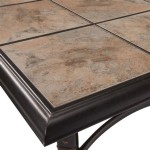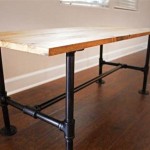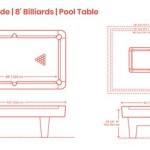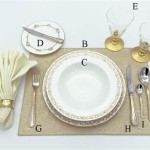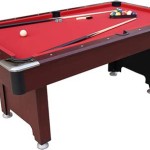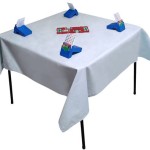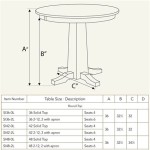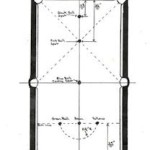Understanding the Japanese Low Table: More Than Just a Piece of Furniture
The Japanese low table, a seemingly simple piece of furniture, holds significant cultural and practical value within Japanese homes. Known by various names, understanding the nuances of these terms provides insight into the table's diverse functions and historical context. This article will explore the different names associated with the Japanese low table, examining their meanings and how they reflect the table's role in Japanese life.
Chabudai: The Heart of Informal Dining and Gathering
Perhaps the most widely recognized term, "chabudai" (ちゃぶ台), evokes images of families gathered for meals, playing games, or engaging in conversation. Traditionally round and low to the ground, the chabudai facilitates a sense of closeness and equality amongst those gathered around it. Its design encourages a relaxed posture, with individuals sitting on cushions (zabuton) directly on the floor. Historically, chabudai were often heated using a charcoal brazier placed underneath, providing warmth during colder months. While modern heating systems have largely replaced this practice, the chabudai remains a symbol of familial intimacy and casual dining.
The etymology of "chabudai" itself suggests its primary function. “Cha” (茶) refers to tea, while “dai” (台) means table or stand. This points to the table’s historical use as a surface for serving tea and light meals. Even today, the chabudai often serves as the central hub for casual dining and socializing within Japanese homes.
Zataku: A Space for Relaxation and Leisure
"Zataku" (座卓), another common term, translates literally to "sitting table." This name emphasizes the table's low height and its connection to the traditional Japanese practice of sitting on the floor. While similar in function to the chabudai, the term zataku can encompass a broader range of table styles, including rectangular and square shapes, and may be used in more formal settings. Zataku are often found in living rooms or tatami rooms, serving as a versatile surface for activities like reading, writing, or playing board games.
The distinction between chabudai and zataku can sometimes be blurred, with both terms often used interchangeably. However, "zataku" tends to be a more general term, while "chabudai" carries a stronger connotation of informal dining and family gatherings.
Kotatsu: Providing Warmth and Comfort in Winter
The "kotatsu" (炬燵) represents a unique type of low table designed specifically for warmth during the colder months. A kotatsu typically consists of a low wooden frame covered by a heavy futon or blanket, with a heat source underneath. This ingenious design traps heat, creating a cozy space for individuals to warm their legs and feet while sitting around the table. Modern kotatsu usually employ electric heaters, while traditional versions utilized charcoal braziers.
The kotatsu serves as a central gathering point for families during winter, providing a comfortable space for relaxation, conversation, and even sleeping. In many Japanese homes, the kotatsu becomes the focal point of the living room during the cold season, replacing the traditional chabudai or zataku.
The Evolution and Continued Relevance of the Japanese Low Table
While Western-style furniture has become increasingly prevalent in modern Japanese homes, the low table, in its various forms, continues to hold a significant place in Japanese culture. This enduring popularity speaks to the table's inherent practicality and its connection to traditional Japanese lifestyles. The low table fosters a sense of intimacy and togetherness, reflecting core values of Japanese society.
From the casual warmth of the chabudai to the winter comfort of the kotatsu, these low tables represent more than just pieces of furniture. They symbolize a deep-rooted cultural tradition and continue to play a vital role in shaping the dynamics of Japanese homes and social interactions.
Understanding the nuances of the various names associated with these tables offers a deeper appreciation for their significance within Japanese culture and provides a glimpse into the evolving relationship between tradition and modernity in Japanese homes.

Kotatsu Wikipedia
Where Can I Find A Japanese Dining Table Which Also Be Used As Coffee And What S It Called Quora

What Is A Kotatsu Choosing The Best Japanese Heated Table

Japanese Antique Vintage Modern Furniture Tables Kotatsu Hibachi Vanities Kyodai Chairs Za Isu

Learning About Japanese Culture From A Table Introvertjapan
Simple Solid Wood Japanese Style Tea Table Balcony Tatami Low Ee Singapore

Japanese Low Dining Table Best In Singapore Sep 2024 Lazada Sg

Never Leave Your Bed Again With This Awesome Japanese Invention
Small Table Low Coffee Simple Japanese Style Tatami Long Makeup Floor Computer Desk Bay Window Ee Singapore

Oriental Antique Japanese Furniture Coffee Table

